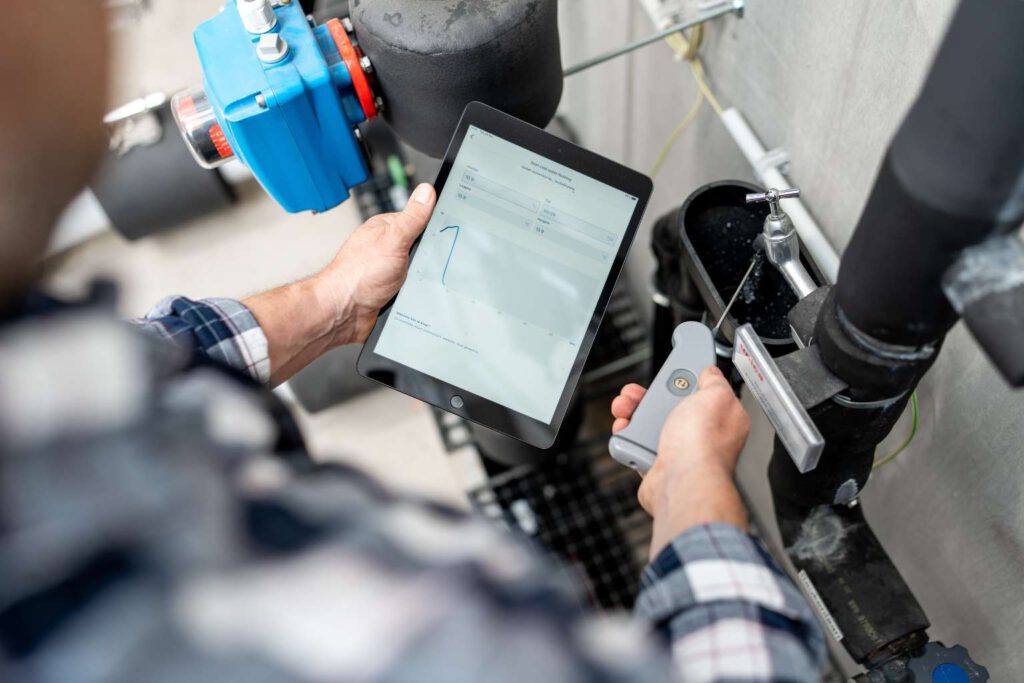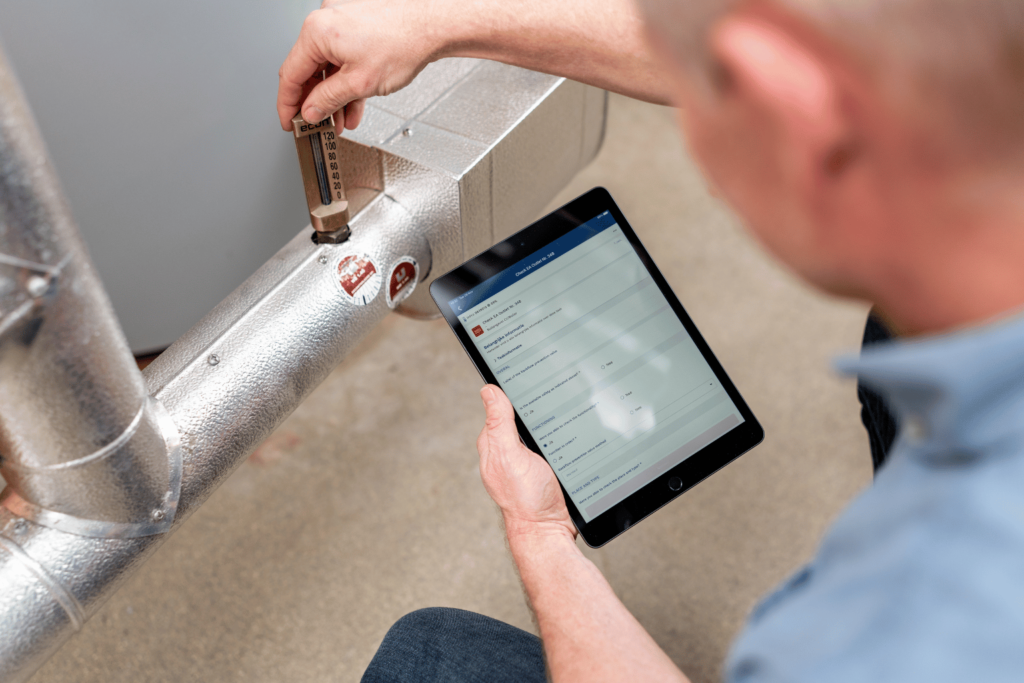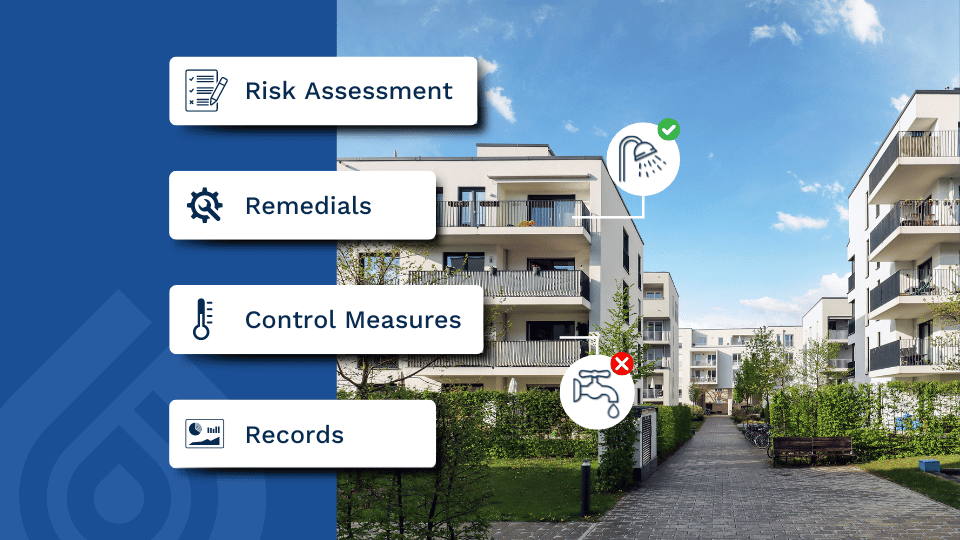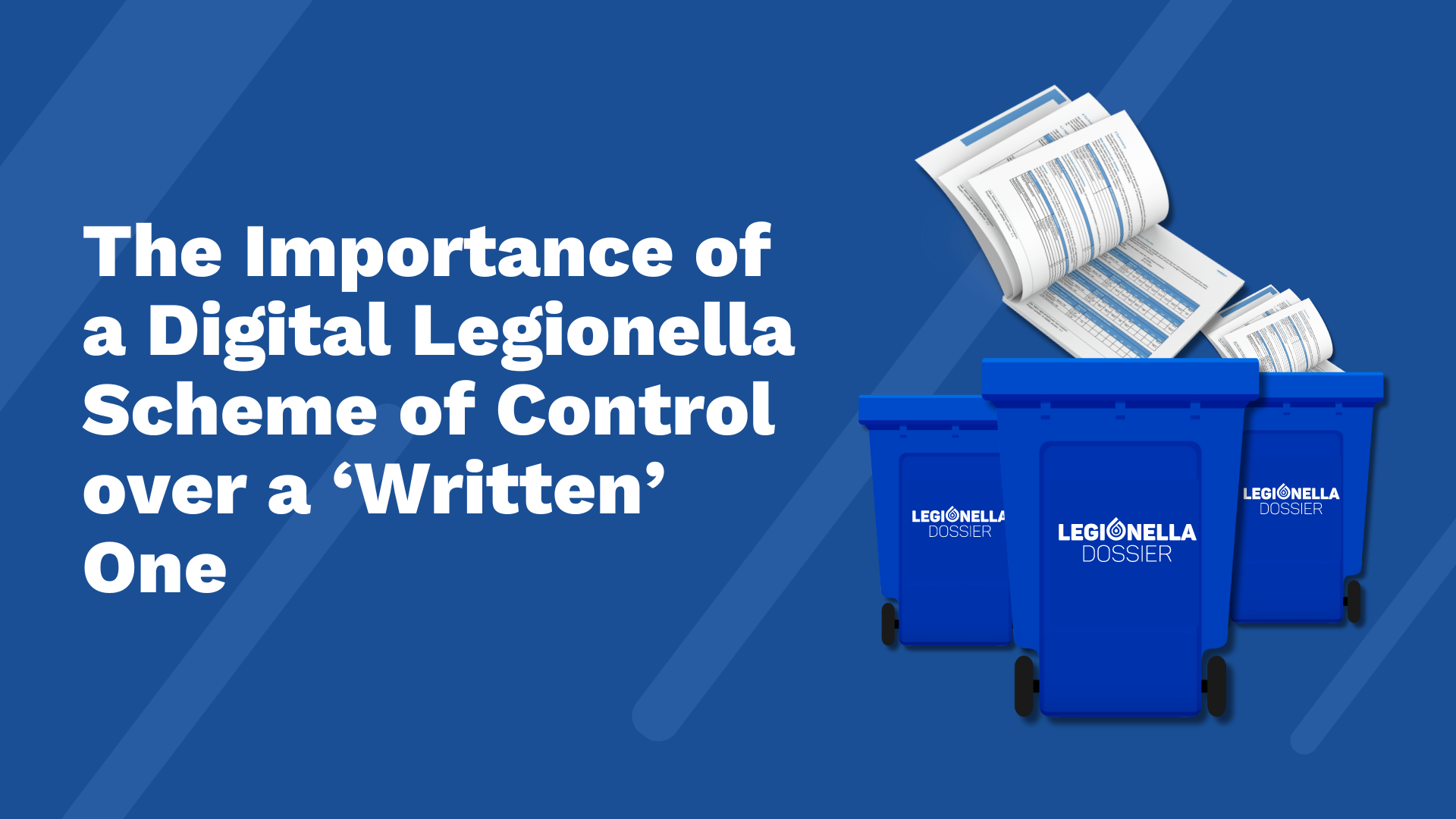The Importance of a Digital Legionella Scheme of Control over a ‘Written’ One
Managing water safety, particularly in controlling the risks associated with Legionnaires’ disease, requires meticulous attention to detail. A crucial component of this management is the Legionella written scheme of control. This document is vital for outlining the measures needed to mitigate the risks posed by Legionella bacteria within water systems.
While traditionally this scheme has been documented in a written format, there is a growing trend toward digitising these control schemes. In this post, we’ll explore why a digital approach to your Legionella written scheme of control can be more effective and efficient.

Table of contents
- What is a Legionella Written Scheme of Control?
- Why Should You Have a Legionella Written Scheme of Control?
- Creating a Legionella Written Scheme of Control
- Difference Between a Risk Assessment and a Written Scheme of Control
- Why You Should Have a Digital Legionella Written Scheme of Control
What is a Legionella Written Scheme of Control?
A Legionella written scheme of control is a comprehensive risk management document that clearly identifies the measures required to control the risks of exposure to Legionella bacteria. This document is a legal requirement, as mandated by the Health & Safety Executive (HSE) in their Approved Code of Practice (ACOP) L8, which covers “Legionnaires’ disease: The control of legionella bacteria in water systems.”
The written scheme of control serves as a practical tool for ensuring that all necessary steps are taken to minimise the risk of Legionnaires’ disease. It includes details such as a schematic diagram of the water system, identification of responsible personnel, operational guidelines, and the frequency of necessary checks and inspections. This document is not just a formality—it is a critical element of your overall water safety management strategy.
Why Should You Have a Digital/Written Scheme of Control?
The importance of a Legionella written scheme of control lies in its role in safeguarding public health. Legionnaires’ disease can have severe consequences, and the written scheme ensures that all risks associated with water systems are identified, controlled, and continuously monitored. Without this document, there is no structured plan to manage the risks of Legionella, which could lead to significant health and legal repercussions.
Moreover, the written scheme of control is not just about compliance—it’s about proactive risk management. It ensures that all stakeholders involved in water safety are aware of their responsibilities and have a clear plan of action. This document also provides a record of the control measures in place, which is essential for audits, inspections, and in the event of an outbreak.

Creating a Legionella Control Scheme
Creating a Legionella written scheme of control begins with a thorough Legionella risk assessment. This assessment identifies the potential risks within your water systems and lays the foundation for the control measures that need to be implemented. Once the risks are identified, the written scheme of control should detail how these risks will be managed, including who is responsible for each task, what actions will be taken, and when these actions need to occur.
Key elements of a written scheme of control include:
- Identification of responsible personnel for monitoring and maintenance
- Operational guidelines for system use and maintenance
- Precautionary measures, such as chemical treatments and inspections
- Scheduled checks and tests, including their frequency such as temperature checks, sampling, TMV servicing and more.
- This document should be regularly reviewed and updated as necessary to reflect any changes in the water system or new risks that are identified.
Difference Between a Risk Assessment and a Written Scheme of Control
While the Legionella risk assessment and the written scheme of control are closely related, they serve different purposes. The risk assessment is the process of identifying potential sources of Legionella risk within a water system. It evaluates the likelihood of these risks leading to exposure and suggests control measures. In contrast, the Legionella written scheme of control is the actionable plan that outlines how these control measures will be implemented, monitored, and maintained over time.
In essence, the risk assessment informs the written scheme of control, but the scheme is the practical, operational document that guides the day-to-day management of Legionella risks.

Why You Should Have a Digital Legionella Written Scheme of Control
While the traditional written scheme of control has served its purpose for many years, transitioning to a digital format offers numerous advantages that can significantly enhance your Legionnaires’ disease management:
Real-Time Accessibility
A digital Legionella written scheme of control can be accessed by all relevant stakeholders from anywhere, at any time. This ensures that the most up-to-date information is always available, which is crucial in preventing and responding to potential Legionnaires’ disease outbreaks.
Immediate Updates
A digital control scheme allows for real-time updates. As new risks are identified or changes are made to the water system, the scheme can be immediately revised and communicated to all involved parties. This ensures that your control measures are always current and effective.
Automated Compliance and Monitoring
Digital systems can integrate automated reminders and compliance checks, ensuring that all required inspections, tests, and remedial actions are carried out on schedule. This reduces the risk of non-compliance and helps maintain the effectiveness of your Legionella control measures.
Data-Driven Insights
Digital platforms can collect and analyse data from various sources, providing insights into the performance of your water safety measures. This data can be used to optimise your control scheme, identify trends, and ensure continuous improvement in managing the risk of Legionnaires’ disease.
Sustainability and Cost Efficiency
Transitioning to a digital scheme reduces the need for paper-based records, contributing to environmental sustainability. Additionally, it can lower costs related to printing, storage, manual record-keeping and even water savings. With smart algorithms you don’t have to flush any longer than necessary.
Collaboration
A digital control scheme fosters better collaboration between service providers and end users by allowing both parties to work together on the same platform. This unified approach ensures that all stakeholders are aligned, improving communication, efficiency, and the overall effectiveness of your Legionella management strategy.
See for yourself and try it out:
Interested?
Experience the benefits yourself!



